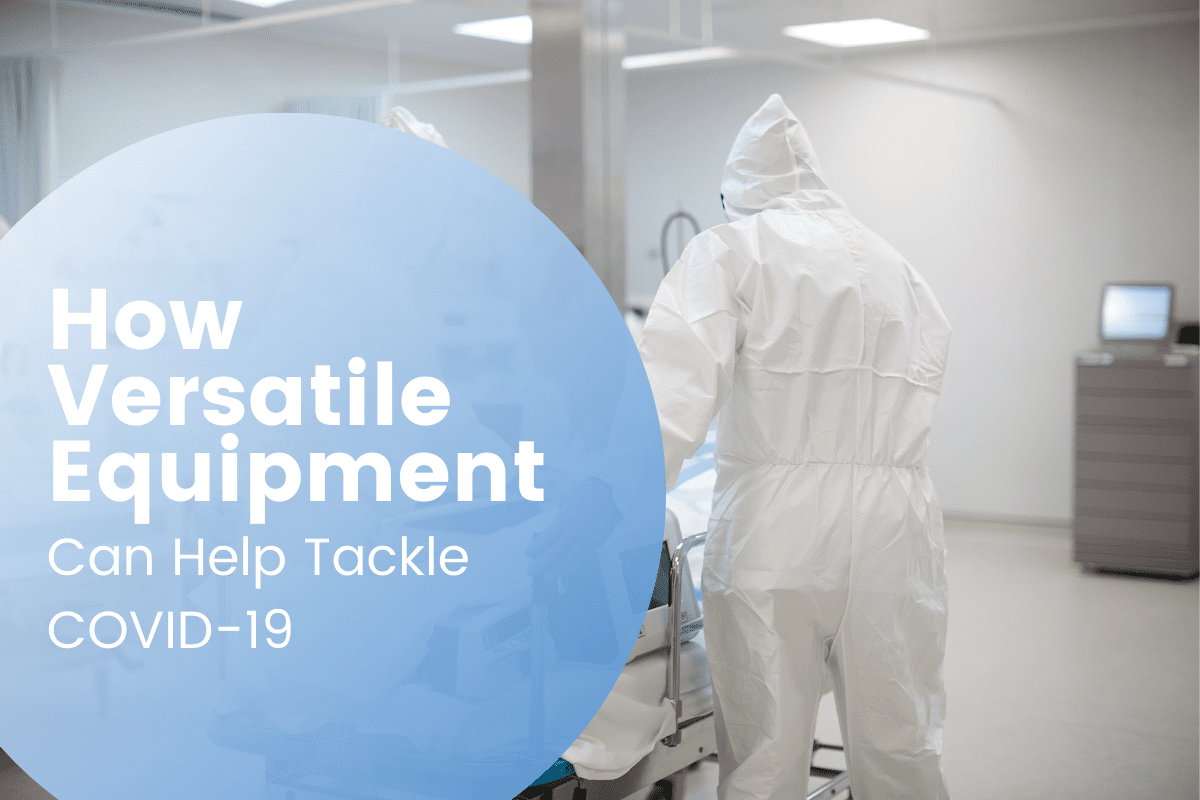
Hospital Administrators are always looking for ways to save money, and one of the best ways to do so is to invest in versatile and durable products for daily use in their facilities. Lakeside manufactures a wide variety of essential healthcare equipment that is multi-functional and designed with durability at the top of mind. The coronavirus pandemic has made it even clearer how important it is to have equipment that is versatile, and Lakeside is able to ship these models out very quickly to allow your facility to adapt to the new challenges it may be faced with during this time of extra strain on the healthcare industry.
Here are some products that are sure to improve your hospital’s flexibility and be reliable for years to come.
Compact Preciso Medical Cart
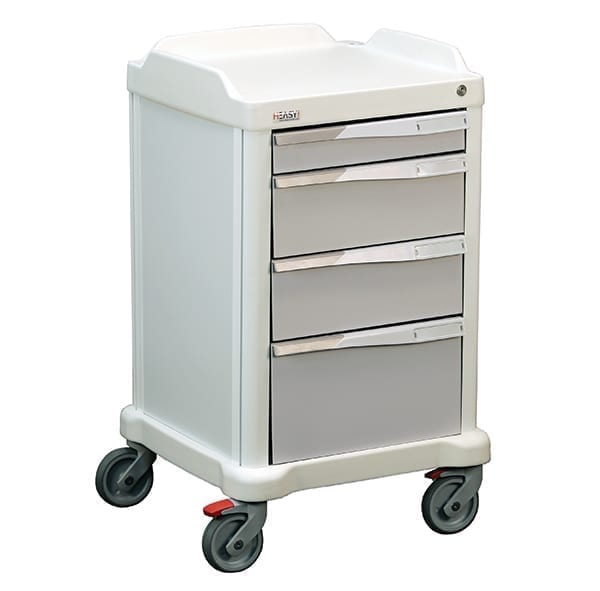 Description:
Description:
The Compact Preciso Medical Cart is a lightweight and versatile multi-purpose medical cart with a small footprint which makes it super easy to maneuver, even in tight spaces. The flexible design of this model means that it can be used to transport all sorts of medical supplies including PPE or anything else that needs to be dispersed all throughout facilities. This cart also comes with a key locking system to secure valuables and other important supplies, as well as a molded ABS plastic top and base to ensure easy sanitization, another key factor in dealing with COVID. The back and side walls of the Compact Preciso Medical Cart are reinforced with aluminum and polyethylene making it very durable, and the quiet 4” casters guarantee this product will be reliable for years.
Key Features:
- Easy to maneuver
- Capable of transporting a wide variety of medical equipment
- Locking system to secure valuables
- Easy sanitization with ABS plastic top
- Highly durable materials that increase lifetime of the cart
- Comes in yellow, red, blue & white but white is sure to be a versatile look for long term use
Why is this a key COVID-19 product?
The Compact Preciso Medical Cart is highly versatile and flexible. Not only will it greatly aid facilities in getting through COVID times, but will prove its value even beyond the pandemic era.
311 Utility Cart
 Description:
Description:
The 311 Utility Cart is Lakeside’s very first and best-selling product. Facilities have relied on the 311 for over 70 years, and there’s a good reason why. This utility cart can be used for many different applications and transport anything from medical instruments, supplies, ventilators, scales, food and more. The all-welded stainless steel construction provides unmatched strength and durability with a 300 lb. capacity, ensuring that the 311 will be reliable for a long time. The protective bumpers on the legs and handles will make sure that your facility doesn’t sustain any damage while transporting supplies on the 3.5” all-swivel casters. The stainless steel construction also ensures quick and easy sanitization while the sound deadening panels prevent unwanted vibration and noise during transport.
Key Features:
- All-welded Stainless Steel Construction
- 300 lb. carrying capacity
- Protective Bumpers
- Capable of transporting a wide variety of medical supplies and equipment
- Super durable design ensures reliability for years to come
Why is this a key COVID-19 product?
The 311 Utility Cart is designed to be very versatile and it’s stainless steel construction ensures easy sanitization and reliability during the pandemic and for a long time after we return to normal.
444 Utility Cart
 Description:
Description:
The 444 Utility Cart is like the big brother to the 311, providing 500 lb. capacity with many of the same features that everyone loves. The 444 is also constructed with stainless steel; one of the strongest and easiest materials to sanitize. The 5” all swivel, no-mark polyurethane casters make the utility cart very maneuverable for its size, providing easy transport of essential supplies, such as ventilators, around a facility. This utility cart is super versatile and can help a facility overcome many difficulties that have arisen from the coronavirus pandemic.
Key Features:
- All-welded stainless steel construction
- Capable of transporting a wide variety of medical equipment up to 500 lb. at a time
- Super durable design ensures reliability for many years
- Protective Bumpers
- 5″ all swivel, no-mark casters
Why is this a key COVID-19 product?
The 444 Utility Cart is extremely versatile and can transport all sorts of medical equipment on its sturdy 5″ all swivel, no-mark casters. The 444 will prove it’s worth with the extra challenges presented by COVID-19 and will become a reliable transport solution for facilities once they return to normal day-to-day operations.
356 Compact Utility Stand
 Description:
Description:
This 300 lb. capacity utility stand is super multi-purpose and is used for many different application within a facility. The compact design makes the stand very easy to maneuver around a facility and deliver supplies that are needed in different areas. The 356 can also be set up in patient rooms or wherever extra storage space may be needed and the top of can function as an additional work surface improving its versatility. The stainless steel construction ensures great durability and the sturdy 3.5” all swivel casters allow for daily use with little to no signs of wear. If necessary, fitted locks are available for the drawer to provide a secure space to hold valuable supplies or other important items.
Key Features:
- Stainless steel construction provides easy sanitization and durability
- Compact design improves maneuverability
- Adds both storage space and work surface
- Locking system is available to secure valuables
Why is this a key COVID-19 product?
The 356 Utility Stand can add value in many different ways because of its great versatility. Its compact design provides facilities with the ability to utilize this product however they see fit, and allows them to maneuver it even in tight spaces. This product will come in very handy in facilities that have to be flexible in how they treat COVID-19 patients.
474 Utility Stand
 Description:
Description:
The 474 is a larger version of the 356 Compact Utility Stand, with a 500 lb. capacity, two drawers, and double width. The stainless steel construction guarantees ultimate durability and makes the stand simple to clean after use. The 4” all swivel casters help make the larger stand maneuverable and easy to place in any location for short or long durations of time. The large top provides ample work surface area while the two drawers create lots of secure space to store valuable supplies. This utility stand is a versatile mobile solution creating additional storage and work space wherever a facility may need it.
Key Features:
- 500 lb. carrying capacity allows for transport and storage of large quantities of equipment
- Double width design provides ample work surface and storage space
- Two drawers provide plenty of space to store valuables
- Stainless Steel construction ensures easy sanitization and durability
Why is this a key COVID-19 product?
The 474 Utility Stand is a great solution for facilities that need extra storage and work surface space in rooms that have been redesigned to treat COVID-19 patients. The super durable stainless steel construction ensures simple sanitization procedures and that the 474 will be reliable for many years after the pandemic.
2523P Utility Cart
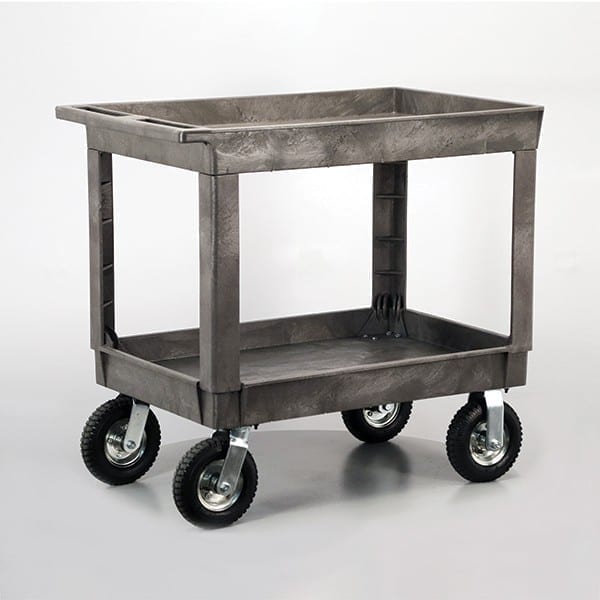 Description:
Description:
This 500 lb. capacity Plastic Utility Cart is super durable and able to transport supplies wherever they are needed. Its two-shelf deep well design ensures that your supplies will be secure and not fall out during transport. The shelves are precision molded from sturdy structural foam plastic to provide strength and dent resistance. This utility cart is built on top of rugged 8” pneumatic tires which allows you to maneuver through tough terrain, and within a facility. This model is an ideal solution for field hospitals or COVID tents as it is extremely durable and can transport essential supplies outside when you facility needs to. The 2523P is super reliable and its sturdy design with reinforced angle legs make it retain its quality over many years.
Key Features:
- 500 lb. carrying capacity allows for transport and storage of large quantities of equipment
- Deep well design ensures supplies won’t fall out during transport
- Precision molded structural foam plastic construction ensures reliability for years to come
- Rugged 8″ pneumatic tires ensure that this cart can transport supplies anywhere they are needed inside or outside
Why is this a key COVID-19 product?
The 2523P Utility Cart is the perfect solution for facilities that have set up COVID tents or field hospitals and need to transport medical supplies over uneven terrain. The durable design also provides dent-resistance and ensures that your facility can rely on this product for years to come.
COVID-19 has changed the way we look at the healthcare industry and has challenged the status quo in many ways. With hospitals having to adapt to new challenges from a pandemic, their equipment and methods have to change as well. Having versatile equipment is extremely advantageous for hospitals that are fighting against the pandemic and operating in ways they didn’t originally plan on. Equipment like medical carts and utility stands greatly improve a facility’s ability to change their layout to better protect patients, and to deliver essential supplies such as PPE all around the facility, or even to outside locations like COVID tents. Hospitals must be able to be flexible amidst the pandemic, and Lakeside manufactures tons of versatile medical equipment that can be shipped rapidly to help our healthcare facilities take on COVID, and provide patients the care that they need.
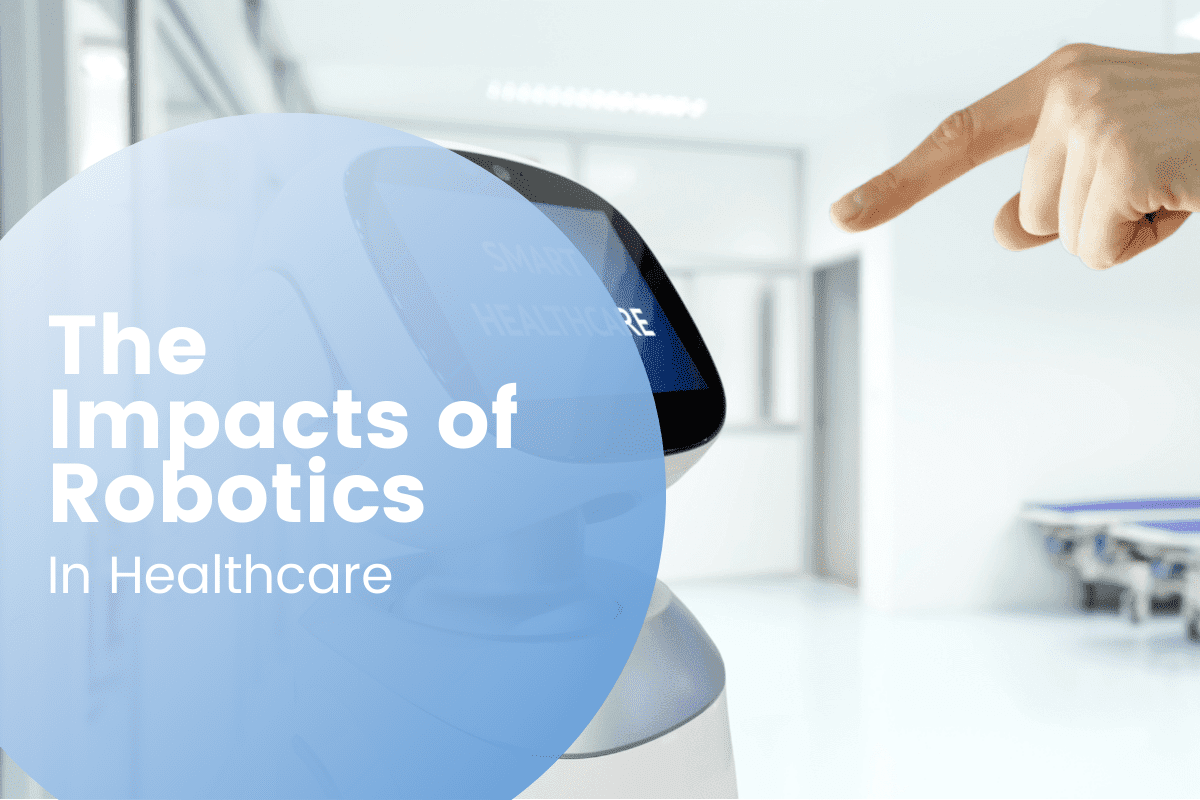


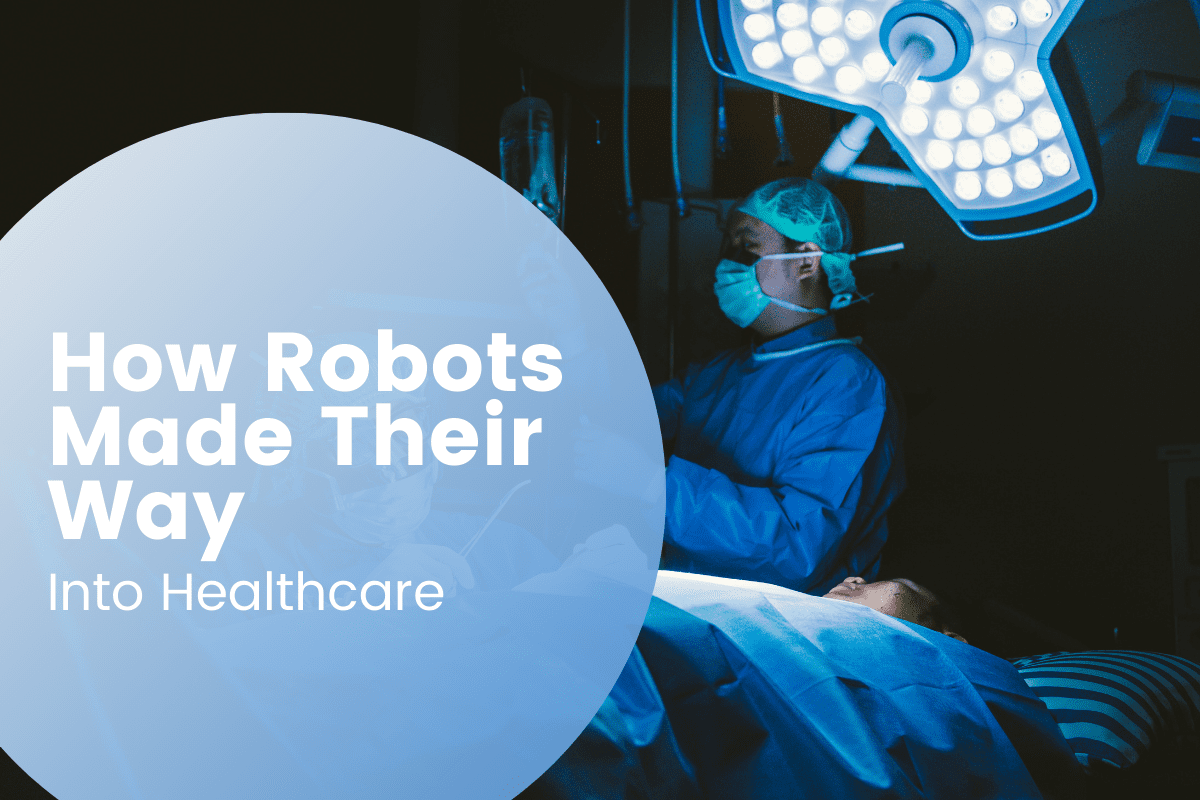
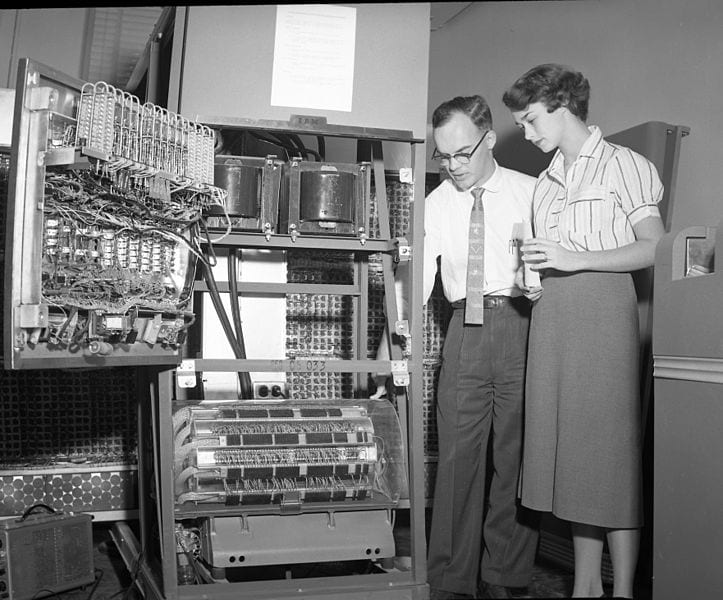 The history of fusing together technological advances with healthcare starts in the 1960s with the IBM 650 supercomputer that researched medical records to report on data abnormalities which could then be researched in closer detail by a physician. As technology continued to develop, healthcare application remained top-of-mind and by 1974, the first CT scanners were released allowing detailed imaging of specific cross-sectional images of bones, blood vessels and soft tissues inside a patient. Throughout the 1980s and 1990s, researchers worked with developers to apply robotics to the healthcare industry, and in 1999 the da Vinci Surgical system was developed to perform minimally invasive surgeries. This signaled a major step forward for the healthcare robotics industry and ushered in a wave of innovations to occur throughout the 2000s up until today. Now, the robotics and healthcare fields are merging as developments are made each day with the end goal of providing the best patient care possible.
The history of fusing together technological advances with healthcare starts in the 1960s with the IBM 650 supercomputer that researched medical records to report on data abnormalities which could then be researched in closer detail by a physician. As technology continued to develop, healthcare application remained top-of-mind and by 1974, the first CT scanners were released allowing detailed imaging of specific cross-sectional images of bones, blood vessels and soft tissues inside a patient. Throughout the 1980s and 1990s, researchers worked with developers to apply robotics to the healthcare industry, and in 1999 the da Vinci Surgical system was developed to perform minimally invasive surgeries. This signaled a major step forward for the healthcare robotics industry and ushered in a wave of innovations to occur throughout the 2000s up until today. Now, the robotics and healthcare fields are merging as developments are made each day with the end goal of providing the best patient care possible.
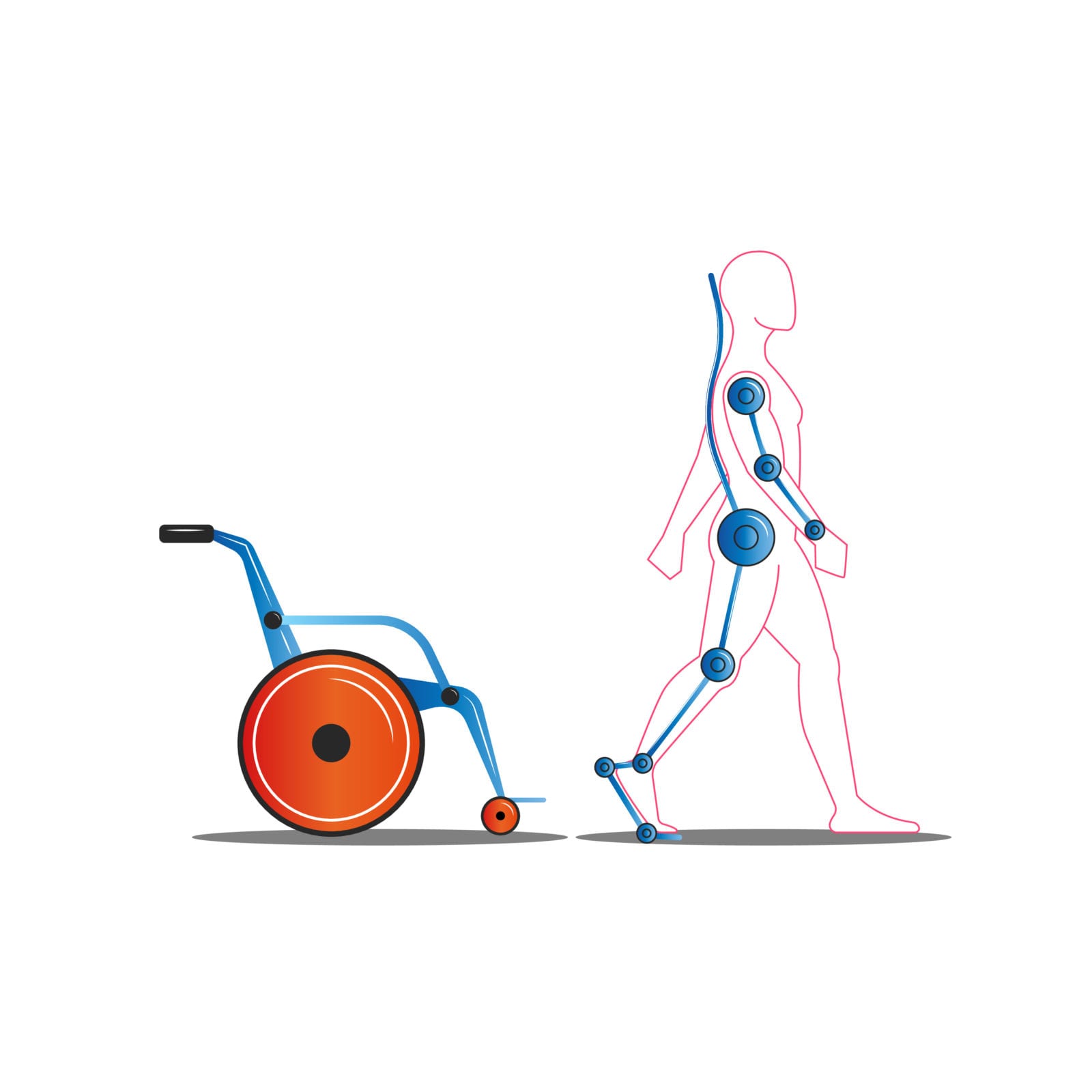 Wearables are a direct interaction between an individual and a unit of technology. Some common examples of this are heart rate monitors, pedometers, health watches, etc. These easily accessible items are great ways to track athletic performance during exercise and can show health trends over a period of time. The latest version of the Apple Watch is a great example of the future of this industry, by achieving a built-in electrocardiogram that monitors heart performance and can notify users of any irregularities. The ability to gain instant feedback on health performance is a huge step forward for wearable technology, and companies like Apple continue to push the boundaries of what small consumer wearables are capable of.
Wearables are a direct interaction between an individual and a unit of technology. Some common examples of this are heart rate monitors, pedometers, health watches, etc. These easily accessible items are great ways to track athletic performance during exercise and can show health trends over a period of time. The latest version of the Apple Watch is a great example of the future of this industry, by achieving a built-in electrocardiogram that monitors heart performance and can notify users of any irregularities. The ability to gain instant feedback on health performance is a huge step forward for wearable technology, and companies like Apple continue to push the boundaries of what small consumer wearables are capable of.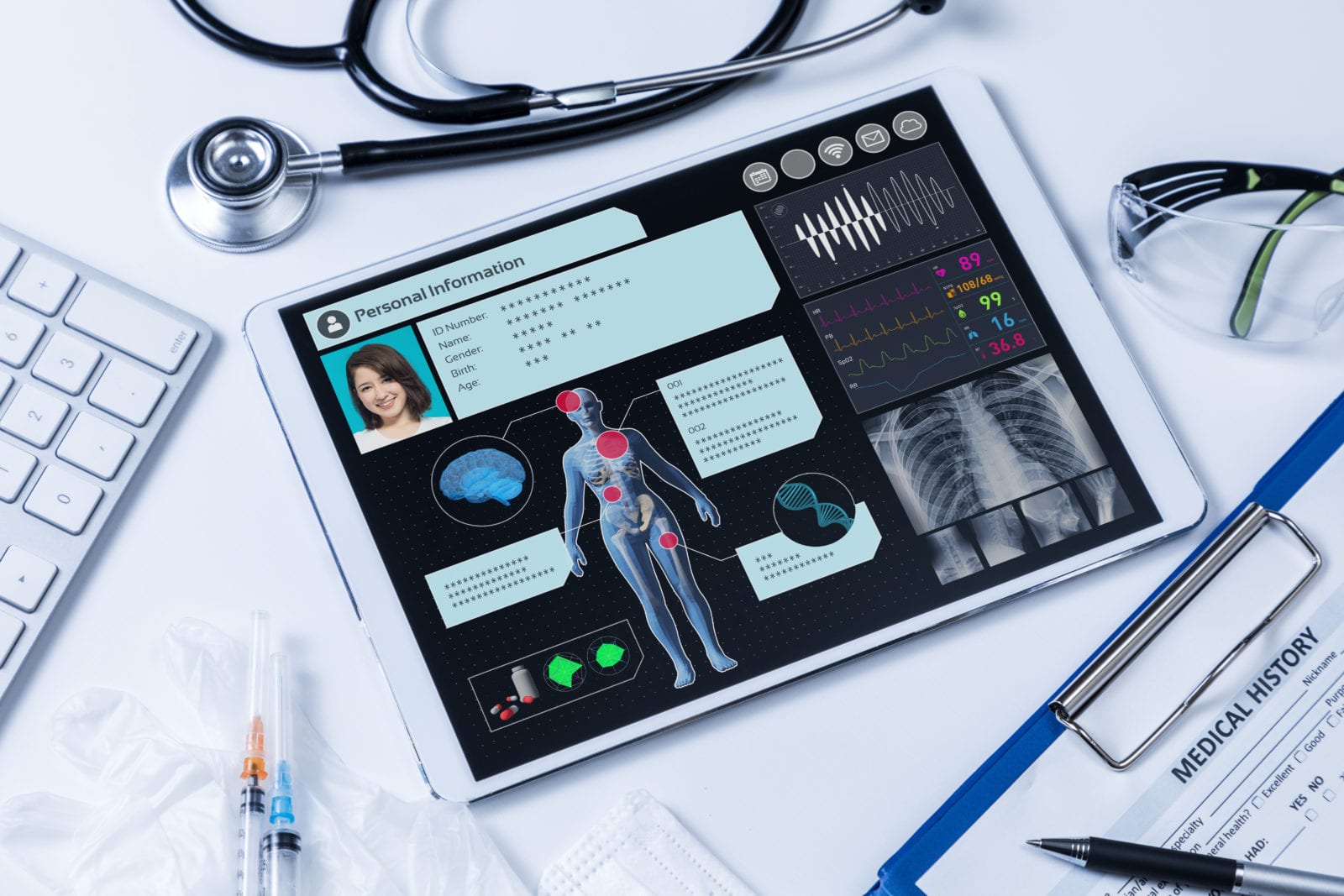 Although EHRs aren’t technically robots, they offer some of the earliest examples of technology merging with healthcare. EHR software allows hospitals to utilize a singular medical platform to accomplish the various workflows necessary during a patient interaction, all while working off a singular, consistent patient chart. For example, if a patient is admitted to the ER, transferred to a surgical unit, and then later brought back for multiple physical therapy sessions at an outpatient clinic, the single patient chart will house all of the information from each of those encounters.
Although EHRs aren’t technically robots, they offer some of the earliest examples of technology merging with healthcare. EHR software allows hospitals to utilize a singular medical platform to accomplish the various workflows necessary during a patient interaction, all while working off a singular, consistent patient chart. For example, if a patient is admitted to the ER, transferred to a surgical unit, and then later brought back for multiple physical therapy sessions at an outpatient clinic, the single patient chart will house all of the information from each of those encounters.

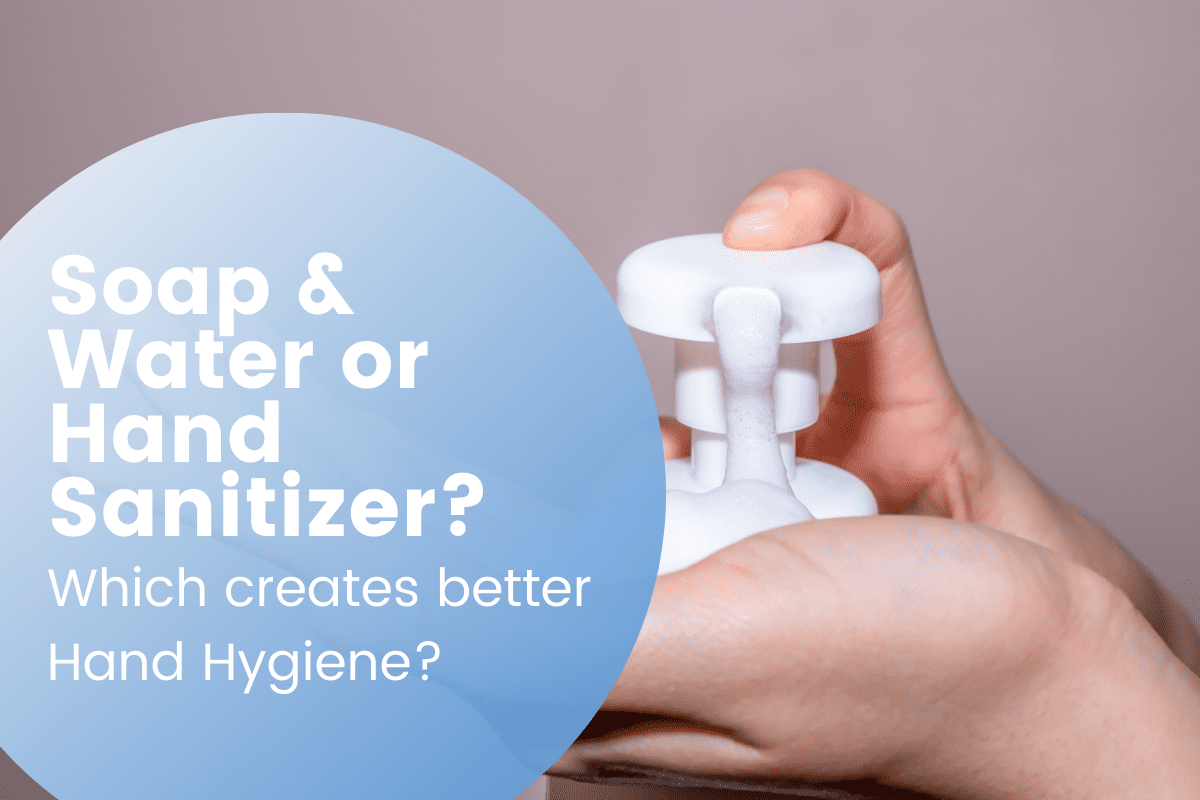



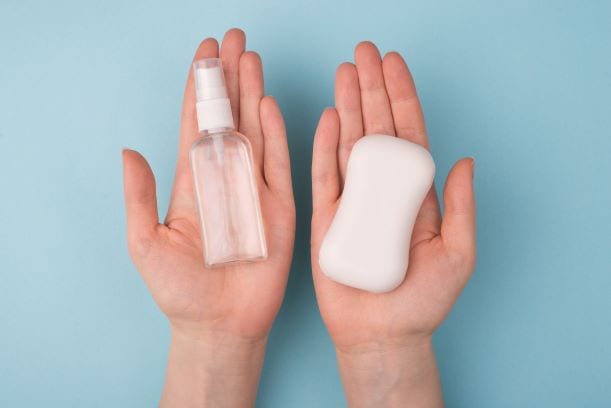 Myth 1: Frequent Hand Washing dries out your skin
Myth 1: Frequent Hand Washing dries out your skin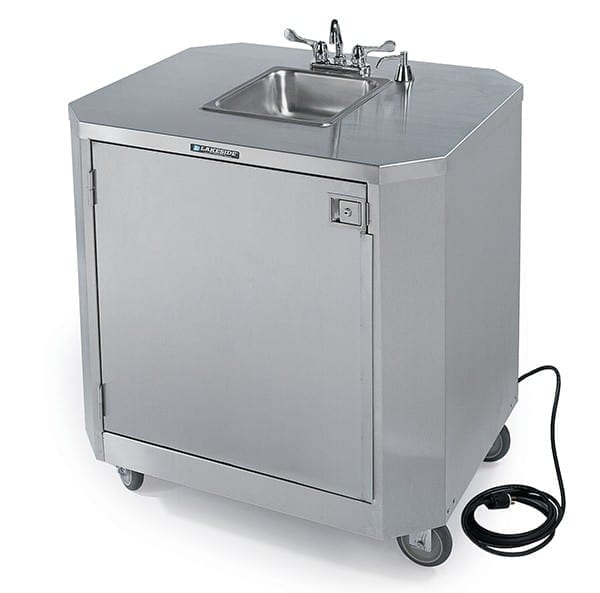

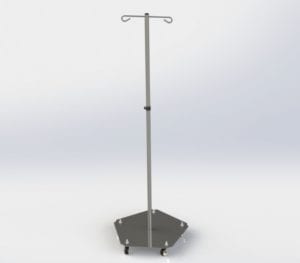 Rapid Response IV Stands (SKUs
Rapid Response IV Stands (SKUs 